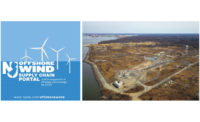Richmond, Va.-based Dominion Resources Inc., the third-largest power-utility owner in the U.S., will spend $4.6 billion on generation through 2018 and immediately begin converting the 227-MW Bremo coal-fired plant, located in central Virginia, to burn natural gas after receiving new state approval, company Chairman and CEO Thomas Farrell II told a Wall Street power-and-energy conference in New York City on Sept. 12.
The company will complete the conversion of three coal-fired plants to burn biomass this year, he added at the Barclays CEO Energy-Power Conference.
Dominion faces a 3,800-MW generation gap over the next 12 years, Farrell said. The company has a future combined-cycle plant planned to help make up the difference.
 |
| Farrell |
Dominion has been working with the U.S. Energy Dept. to install test turbines and seeks grant money to help pay for the investment, he said. "It’s going to have to get approved by our regulators, so it’s going to be part of our rate base. It will be a utility asset, or it [will have] less likelihood of being built," he added.
Dominion also is pursuing a 1,300-MW gas-fired plant in Brunswick County, Va., near the North Carolina border. “It is going to replace capacity that’s going to be lost when we close down coal plants in the far eastern part of the state because of the mercury rule,” Farrell said.
Dominion expects to spend $3.2 billion on transmission through 2018. The company has eight transmission projects under way or under development. “But there still is much more to be done. The difference between what we’re working on now and what else needs to be done [involves] very large projects that are going to take many years to complete,” Farrell said.
The utility firm's planned capital growth through 2018 is an average of $2.6 billion a year, which includes spending on transmission, generation and its gas businesses.
Further, Dominion has begun talks with shale-gas producers related to an estimated 100,000 acres in the West Virginia portion of the Marcellus shale region that have potential natural-gas reserves of 1 trillion cu ft, Farrell told Barclays conference.
"We're like any other landowner. We are not a drilling company, but we own the mineral rights, and we will farm it out," Dan Donovan, a Dominion spokesman, said. Developers have contacted Dominion about drilling on the acreage, he added.
The acreage is located in the area around Dominion's gas-storage assets, close to the Ohio and Pennsylvania border. The company retained the ownership of the gas rights to make sure that drilling in the area would not compromise the storage facilities, he said.
The company also plans to form a master limited partnership whose assets will include Dominion's Cove Point LNG operation and its half interest in Blue Racer, a company that provides midstream services to Utica shale producers, Farrell said at the conference. The company won approval federal approval on Sept. 11 to export liquefied natural gas from Cove Point in Maryland to countries that don’t have free-trade agreements with the U.S.
Farrell said the new approach creates an efficient, transparent vehicle to finance capital investments more closely attached to the assets of Dominion's regulated gas business. The new entity will be created in the third quarter and become a public company in the second quarter of 2014.
There are many growth opportunities for Dominion's gas business, Farrell said, adding, "We are pursuing them all."
The company plans to invest between $5.8 billion and $6.2 billion in its gas business through 2018, he said.
Among the investment areas are the company's pipeline projects, which include the New Market project, valued at between $150 and $180 million, that will provide the firm transportation from Leidy, Pa., to multiple delivery points to serve the New York market. It will have capacity of 112,000 dekatherms per day (Dt/day).
Other projects include the Western Access, which will transport residue gas from third-party processing plants to interstate pipelines. That project will have a capacity of 300,000 Dt/d and require an investment of $90 million.



Post a comment to this article
Report Abusive Comment